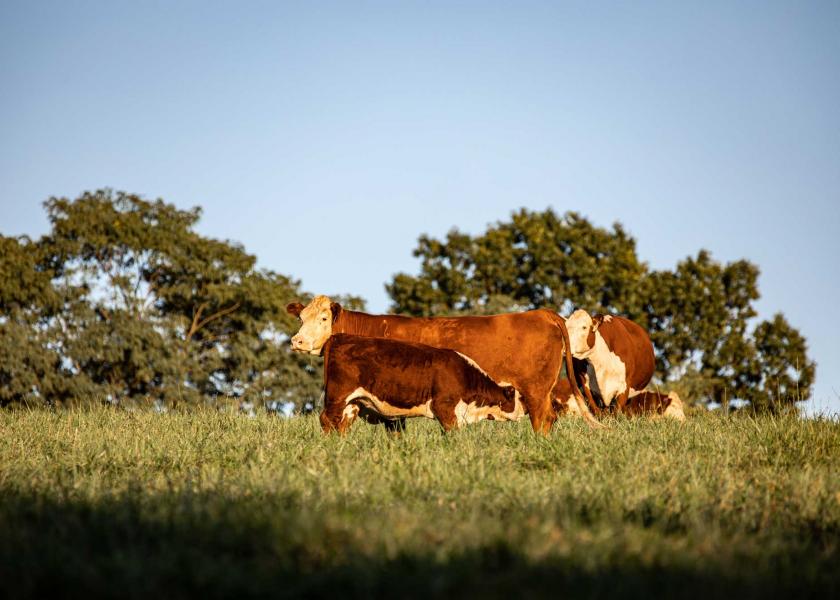Sexten: Sorting for Options With Thin Cows

Compensatory gain is one of the most valuable traits in the beef industry. If you don’t believe me, compare the prices of “green” and “fleshy” feeder cattle some time. Sure, the program cattle will ring the bell but a set of green steers off grass are a close second and hard to imagine a more discounted weight class than 6 weight fleshy heifers.
Ironically the value proposition is the exact opposite for the cow herd. Thin cull cows find few friends and a thin bred cow in October has even odds of becoming a pound cow or going back to the ranch. With much of the US cow herd in some form of drought the odds of thin cows heading into the autumn weaning season are high. This month let's look at practical approaches to wrangling the challenge of dry pastures and thin cows.
There is no shortage of articles highlighting the benefits of early weaning to addressing drought pastures. Early weaning can improve reproduction and cow condition by eliminating milk production demands. Seems simple but there are two key challenges limiting adoption: weaning early enough and managing the calves.
Early weaning has the greatest benefit to the cow herd when there are days left in the breeding season. Once the breeding season ends any reproduction benefits are delayed until the next year. When using a controlled breeding season this means early weaning needs to occur between 90 and 150 days of age. For many operations this is a dealbreaker, trading the challenge of thin cows for that of managing flyweight calves.
Set aside the biological advantages of decreased energy demands of milk production and weaning age, let's consider what weaning accomplishes from an economic perspective. Simply put, weaning separates the cow herd into diverse marketing units.
Trying to reduce ranch nutrient demand by marketing cow-calf pairs is challenging due to a limited buyer pool that is likely in a similar drought situation. Optionality is an underappreciated marketing characteristic. Once weaned the options to market or retain cows and strategically manage our forage resource get much simpler. Weaning is the first step to unlocking optionality. The next is pregnancy diagnosis.
If you don’t routinely pregnancy check cows at weaning this year to start. Open cows are a drain on the resources. With limited forages and high feed prices this is no time for “one more year” cows. Remember the day a cow checks open she is 16 months from returning revenue to the operation assuming she gets bred the next day.
With limited energy resources at the ranch, the decision to feed open cows into a more favorable market will require a sharp pencil. Historically feeding sound, open cows until the higher spring market has proven economical. These thin cows are like those green steers we discussed earlier, ready to eat and take advantage of compensatory gain.
If you are going to the work of pregnancy diagnosis make sure and have the vet call the probable calving date. The path to a uniform marketing group starts with a short calving season. Reduce ranch nutrient demand by marketing the late calving cows in addition to opens. Alternatively late calvers can be managed separately from the earlier calving cows to prioritize forage quality relative to calving date.
While calving date is insightful, body condition score (BCS) provides one of the most actionable data points in the beef industry and is simple to determine. Collection of actual BCS over a cow's lifetime provides an index one can compare year over year. If you are approaching this year differently due to drought consider keeping it simple and sort cows by thin and fat enough.
Similar to the green feeder steer, a thin cow will experience compensatory gain. Sorting the thin cows at weaning after selling open cows is one of the best ways to prioritize limited forage resources. From a timing perspective the compensatory gain is maintained 45-60 days following the nutrient restriction so don’t wait until calving season to prioritize feed and forage resources.
Fall calving cows are often not as nutritionally challenged before calving, yet this year they may be thin as well. Remember feeding cows while lactating increases milk production first and only after maximizing milk production does cow condition have the opportunity to improve. In the event cow condition needs to be moved from thin to fat enough the time to address the problem is before calving.
There are other advantages to supplementing thin cows earlier in the fall beyond compensatory gain. The one upside of drought is you waste very little hay when feeding on dry ground. Thin cows often don’t compete as well for feed and forage when fed in large unsorted groups so unrolling hay offers unlimited bunk space over feeders.
In a year where supplementation to address forage quality is likely to be expensive, providing higher quality forage for longer periods may be an alternative strategy. Offering the highest quality forage after weaning to thin cows also ensures adequate time to make up condition before calving. Getting mature cows to a BCS of 5 and heifers to a 6 should provide adequate reserves to ensure rebreeding. Cows managed to get close but not conditioned enough to re-bred next year are a drain on resources comparable to the open cow.
Sorting provides managers strategic marketing and feeding options when dealing with limited forage resources and higher inputs. After trimming the “ends” by culling open and sorting the fat enough cows, managers can prioritize feed and forage to thin cows at weaning to take advantage of the only free lunch in the beef industry.







